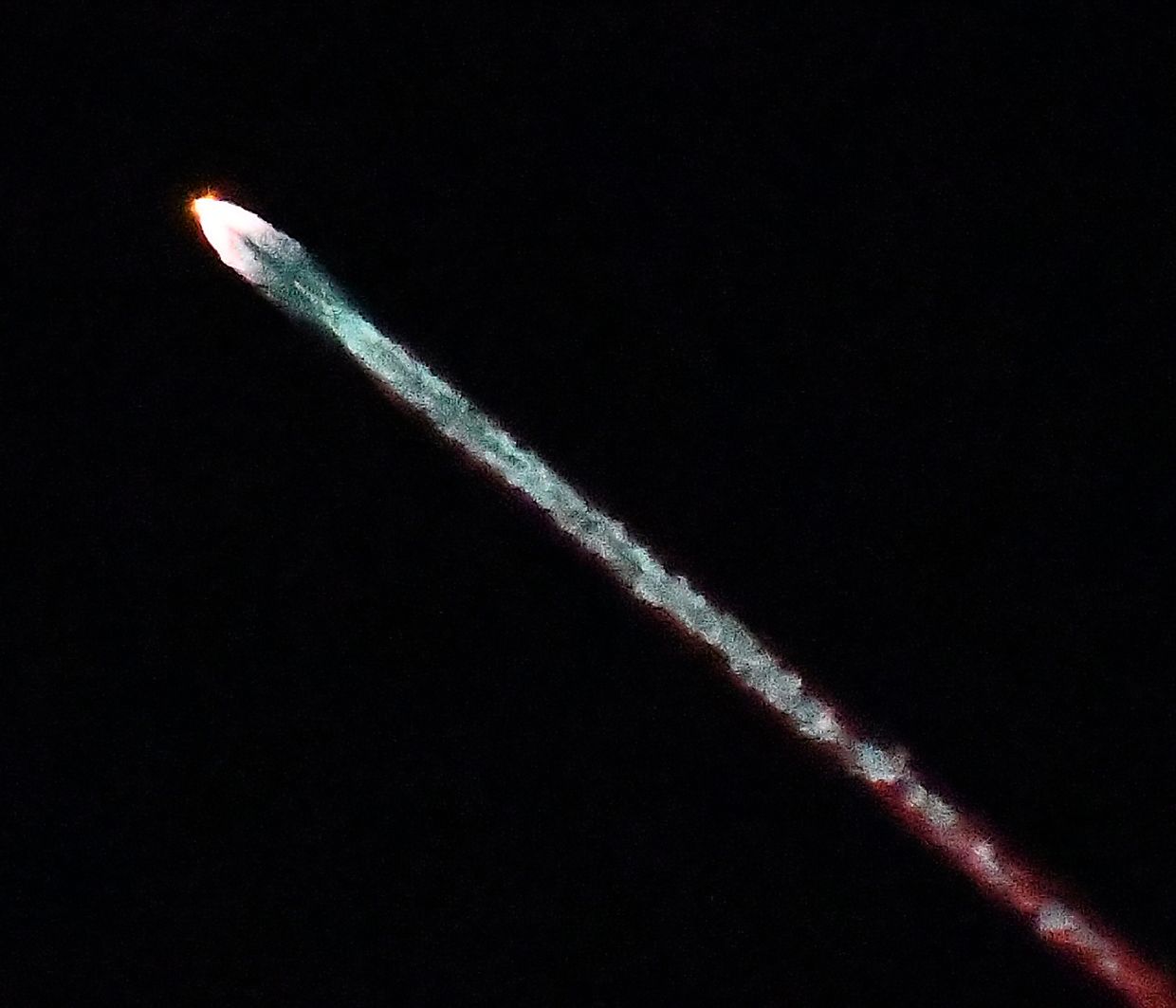The deployment of SpaceX's Starlink satellites has been linked to the increase in UFO sightings. Photos: Gene Blevins/ZUMA Press Wire/dpa
He has been dedicated to UFO research for decades.
The first thing Hansjurgen Kohler insists on clarifying as we begin our conversation is that at his place of work, the Central Research Network for Extraordinary Celestial Phenomena (Cenap), they don't believe aliens are lurking somewhere on Earth.
"We differ from the ufologists, who claim that there is an extraterrestrial presence on Earth," says Kohler, the founder and director of Germany's UFO registration office Cenap.
Some ufologists, he explains, claim that some 113 dead and living aliens remain hidden in the US after 30 flying saucers crashed there.
"This is completely unfounded and also goes against our experience in over 50 years of active case investigations," Kohler says.
According to its director, Cenap has processed more than 11,000 reports of unusual celestial sightings to date, analysing hundreds of photos and videos that could be attributed to natural and earthly causes.
While there are currently 119 unsolved cases, there's no reason to engage in speculation, Kohler says. The problem with those cases is that they miss key data like the date, time or location of the sighting.
Point of contact
For all those immediately thinking of aliens, Kohler reminds us of the meaning of the acronym UFO: unidentified flying object.
He founded Cenap as a "point of contact for all those who want an explanation for a phenomenon they observed and didn't understand".
The organisation, founded in 1976, is supported by the European Space Agency (ESA) and Germany's air traffic control company DFS.
The type of cases reported to Cenap has changed dramatically over the decades, Kohler says.
In the 80s, mini hot-air balloons caused a stir, followed by sky tracker beams and disco lights in the 90s.
At the turn of the millennium, the centre saw a spike in reports due to Chinese lanterns and in the 2010s, private and industrial drones entered the mix.
Thanks to Musk
For about five years now, the rise of SpaceX, the space company owned by tech billionaire Elon Musk, has also been reflected in reports made to Cenap, with its Starlink satellites driving up the number of UFO sightings.
"In normal years, we usually had 300 to 400 cases, but now, for the past five years, that has gone up to 700 to 900," Kohler says.
In 2024, the organisation recorded over 850 cases by Oct 20, with the figure expected to surpass 1,000 by the end of the year.
But not all cases can be attributed to Musk's satellite network, which aims to provide global Internet coverage.
So-called burnups – rocket ignitions – in orbit sometimes also prompt people to make a report "because they cause fantastic formations at the zenith of the night sky when illuminated by the sun", Kohler explains.
Verifying a UFO sighting
But what exactly happens after a UFO sighting is reported?
First of all, Cenap records the basic info: date, time and location of the sighting.
They then create a map of the location and enter the witness's description and any attached photos or videos into a case file.
Only then does the real work begin: "The next step is to check for the usual suspects. In the case of night sightings, we check astronomical data for the location of the sighting (planets, star charts), as well as satellite, ISS and bright rocket parts overflight data if necessary," Kohler says.
The organisation also checks air traffic data to make sure the sighting wasn't an aircraft or a helicopter.
They compare the photos and videos of the report with their extensive archive dating back to 1973. "This usually leads to the identification of the respective observation," says the Cenap director.
Conspiracy theorists
While you might think that it's only people who believe in aliens who report UFO sightings, "we have people from all age groups and professions" who file reports, Kohler says.
"99% of them want us to explain what they have seen, and they are not coming to us expecting to have spotted an alien spaceship."
"Of course there is that 1% who are convinced that they have seen an alien spaceship... who are disappointed when we identify an earthly cause," he adds.
UFO sightings are not only reported all over Germany, it's a thing elsewhere too.
In the US, the National UFO Reporting Centre, founded in 1974 by UFO investigator Robert J. Gribble, has processed more than 180,000 reports since its beginnings.
What drives a UFO researcher
Kohler says he is keen to explain these sightings for several reasons.
For one thing, he is always curious when new things appear in the sky, especially amid the recent technological developments including new devices used for event lighting as well as drones, which are increasingly visible.
In addition, his organisation is the only reasonable point of contact for citizens looking for a scientific explanation for their observations.
Kohler's fascination with space stems from when he was 11, watching the moon landing on TV in black-and-white, he says.
At that time, he did not rule out the idea of extraterrestial life – or even the possibility that aliens could land on Earth.
"Because if we humans had the opportunity to go to the moon, why shouldn't aliens be able to?"
Today, he separates his UFO research from extraterrestrial life, since he "has so far been unable to find any evidence of extraterrestrial visits to Earth".
"From my astronomical knowledge, however, I am convinced that extraterrestrial life exists and that we will find evidence in the future with our probes and better telescopes." – dpa





